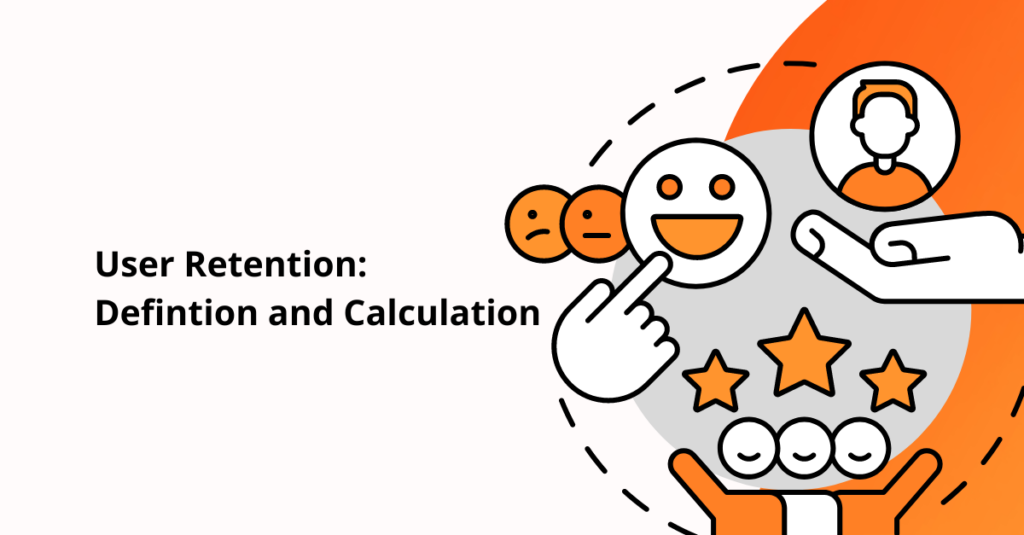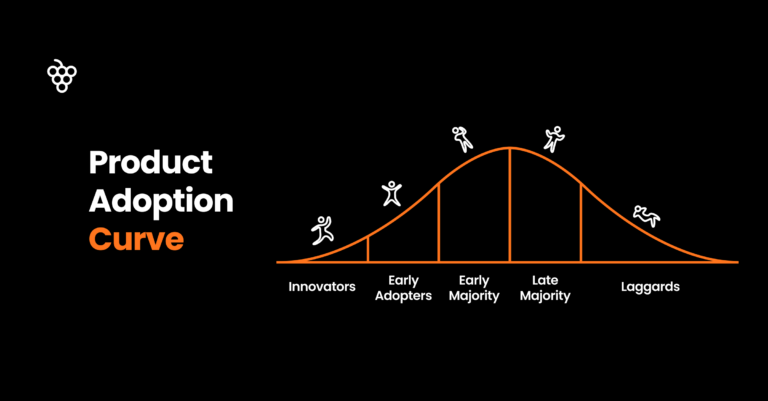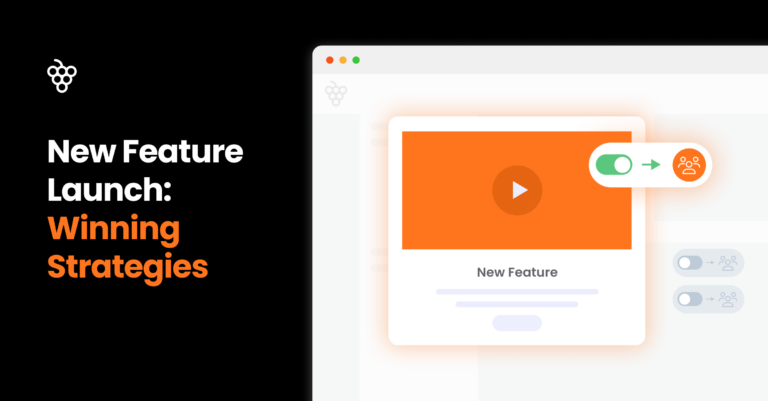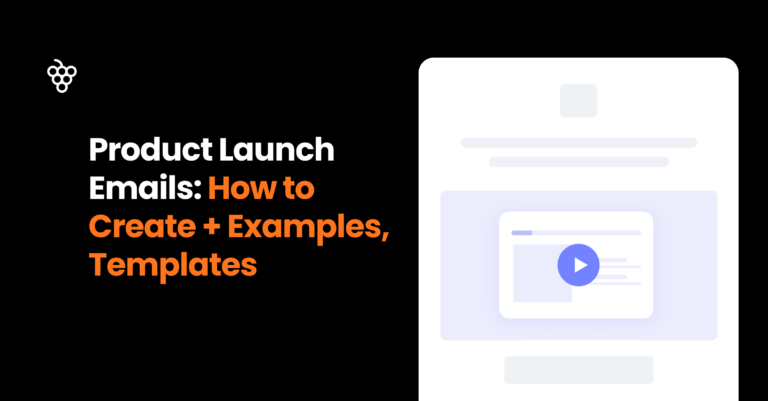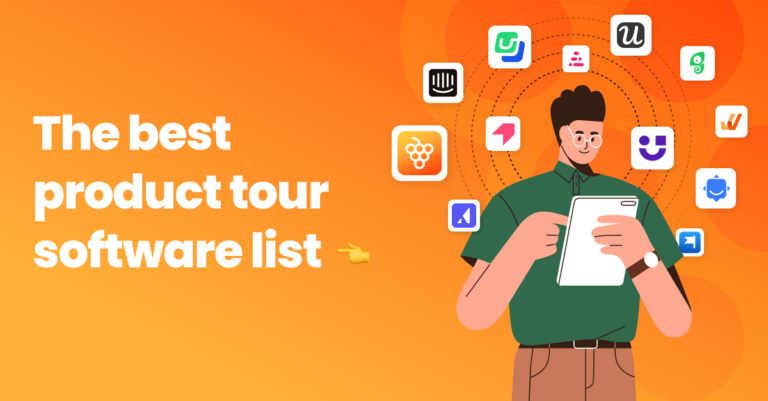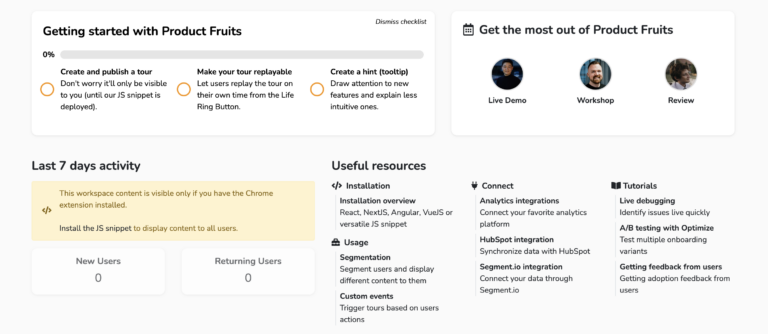What is user retention?
User retention is the ability of a business to keep its users engaged, active, and consistently using its product or service over a period of time. It’s not just about getting users to sign up—it’s about ensuring they stick around, find value, and continue to interact with your brand.
Think of it this way: Acquisition brings users through the door, but retention keeps them from walking out.
A strong retention strategy transforms one-time users into loyal customers, boosting revenue and long-term business sustainability. Companies with high retention rates often enjoy lower acquisition costs, higher customer lifetime value (CLV), and stronger brand advocacy—all of which contribute to scalable, predictable growth.
Pssst… Take a peek: 6 User Onboarding Metrics You Need to Keep An Eye On
Why is User Retention So Important?
Many businesses focus heavily on acquisition—spending significant resources to attract new users. However, acquiring new customers can be 5x more expensive than retaining existing ones. A high churn rate (users leaving after a short period) leads to wasted marketing spend and stagnant growth.
Here’s why user retention should be a top priority:
- Higher Revenue & Profitability – Retained users are more likely to upgrade, purchase add-ons, or subscribe for longer periods.
- Reduced Customer Acquisition Costs (CAC) – Keeping users engaged eliminates the constant need for costly marketing campaigns to bring in new ones.
- Stronger Brand Loyalty & Advocacy – Satisfied users turn into brand ambassadors, spreading positive word-of-mouth and bringing in new customers organically.
- Sustainable Business Growth – A predictable retention rate leads to steady revenue, making it easier to scale.
What is the difference between User retention rate vs. customer retention rate?
The terms User Retention Rate and Customer Retention Rate are often used interchangeably, but they have key differences depending on the business model and how users interact with a product or service. Let’s break it down:
1. User Retention Rate (URR)
Measures how many users continue to engage with a product, platform, or service over time, regardless of whether they are paying customers or not.
Used in:
- SaaS (free-tier users, trial users, app users)
- Mobile apps (active users)
- Online platforms (social media, content websites, marketplaces)
Formula:

Example:
If a mobile app starts with 10,000 users, gains 3,000 new users, and ends with 9,000 users, the user retention rate would be:

This means 60% of the original users remained active.
2. Customer Retention Rate (CRR)
Measures the percentage of paying customers who continue their subscription, renew contracts, or make repeat purchases over time.
Used in:
- Subscription-based businesses (SaaS, streaming services)
- E-commerce (repeat buyers)
- B2B services (contract renewals)
Formula:

Example:
A SaaS company starts with 1,000 paying customers, gains 200 new customers, and ends with 950 customers. The CRR would be:

This means 75% of the original paying customers remained subscribed.
What is Product Retention?
Product retention focuses on how well a product retains its relevance, value, and usage over time. Instead of tracking individual users, it measures whether the product remains useful, competitive, and adopted by customers or businesses.
🔹 Key Metrics for Measuring Product Retention:
- Feature Adoption Rate = % of users adopting key product features.
- Session Duration & Feature Usage = How long and deeply users engage with product functions.
- Product Stickiness (DAU/WAU Ratio) = How frequently users return to core product features.
- Product Expansion Metrics = Upgrades, renewals, or add-ons purchased.
🔹 Example:
A CRM software company monitors product retention by analyzing whether businesses continue using its reporting and automation features over time.
✅ Goal: Ensure the product remains relevant, valuable, and consistently used.
User Retention Rate vs. Churn Rate: Key Differences
User Retention Rate and Churn Rate are two sides of the same coin. They both measure how users interact with a product over time, but from opposite perspectives.
1. User Retention Rate (URR)
✅ Measures: The percentage of users who continue to use a product or service over a period of time.
❇️ Higher is better – a high retention rate means users are finding value and staying engaged.
📌 Formula:

Example:
If a SaaS product starts with 5,000 users, gains 1,000 new users, and ends with 4,500 users, the retention rate is:

Interpretation: 70% of the original users remained active.
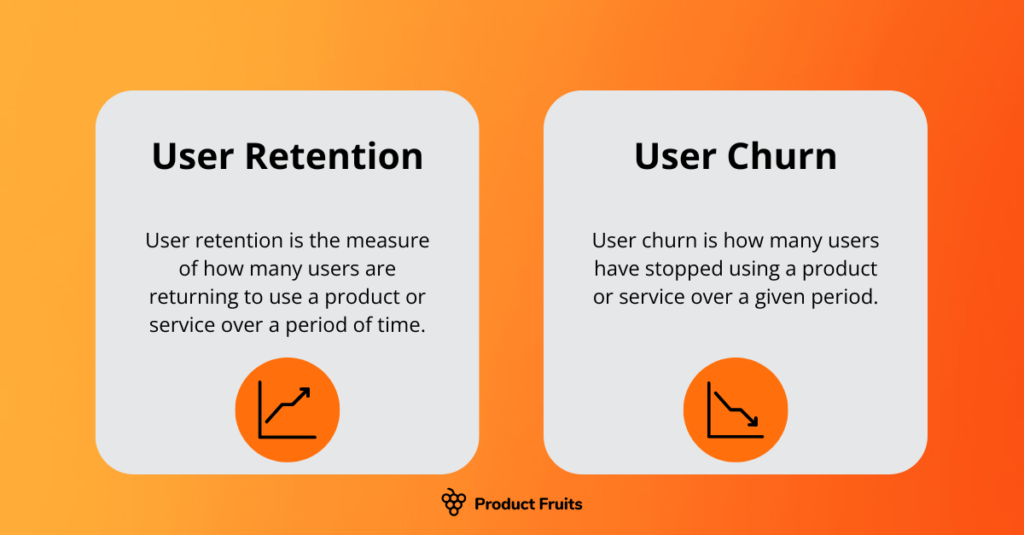
2. Churn Rate
🚫 Measures: The percentage of users who stop using a product or service over a period of time.
⚠️ Lower is better – a high churn rate signals that users are leaving quickly.
📌 Formula:

Example:
Using the same numbers:
If 5,000 users started, and 1,500 users stopped using the product, the churn rate is:

Interpretation: 30% of users churned (stopped engaging).
How to Measure User Retention
User retention is one of the most critical business metrics, as it determines how many users continue to engage with a product or service over time. Measuring user retention involves multiple methods and depends on factors like your business model, user engagement levels, and industry benchmarks.
You can measure user retention using qualitative and behavioral methods. These provide deeper insights into why users stay or leave, helping you refine your engagement and retention strategies. Here are 6 ways to measure user retention:
1. Customer Feedback & Exit Surveys
📌 What It Measures:
- Direct insights from users about why they stay or why they leave.
- Helps uncover pain points, feature requests, or engagement blockers.
🔹 How to Implement:
- Use surveys when a user cancels a subscription or stops engaging.
- Ask open-ended questions like:
- What made you stop using our product?
- What could we do to bring you back?
- What was the most valuable part of your experience?
🔹 Example Insight:
A user might respond: “I loved the product, but the notifications were too frequent and annoying.”
Actionable Takeaway: Adjust notification frequency to improve retention.
✅ Why It’s Useful:
- Helps identify friction points leading to churn.
- Provides qualitative data to complement numerical retention rates.
2. Customer Support Interaction Trends
📌 What It Measures:
- How often do retained vs. churned users interact with support?
- Common support issues that lead to churn.
- Users who frequently engage with helpful support tend to stay longer.
🔹 How to Implement:
- Analyze support ticket history to see:
- Do retained users reach out for guidance, not complaints?
- Are churned users frustrated by poor support before leaving?
🔹 Example Insight:
If many churned users raised tickets saying “I couldn’t figure out how to use Feature X,”
Actionable Takeaway: Improve onboarding or offer better product walkthroughs.
✅ Why It’s Useful:
Helps refine self-service resources (FAQs, chatbots, knowledge bases).
Identifies customer pain points before they lead to churn.
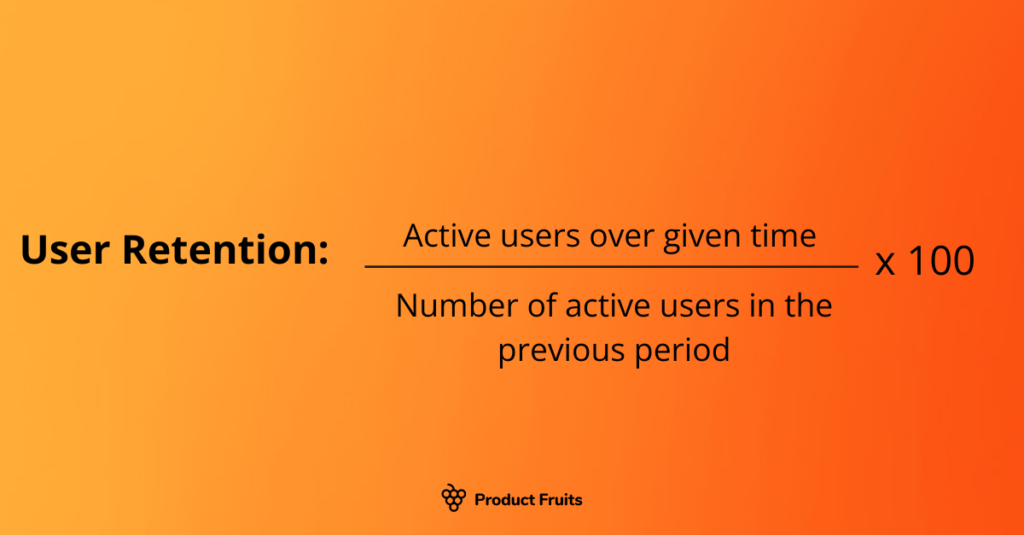
3. Social Media & Community Engagement
📌 What It Measures:
- How actively users discuss your brand online.
- If users feel connected to a brand community, they’re more likely to stay.
🔹 How to Implement:
- Track brand mentions, comments, and discussions across:
- Twitter, LinkedIn, Reddit, Facebook groups
- Product forums, Slack communities
- Analyze sentiment:
- Are users excited about new features?
- Are they complaining about issues that lead to churn?
🔹 Example Insight:
A SaaS company notices a Reddit thread where users say: “I love this tool, but I wish it had integrations with X and Y.”
Actionable Takeaway: Build integrations to keep existing users engaged.
✅ Why It’s Useful:
Helps strengthen brand loyalty and engagement through community building.
Detects early warning signs of churn (negative social sentiment).
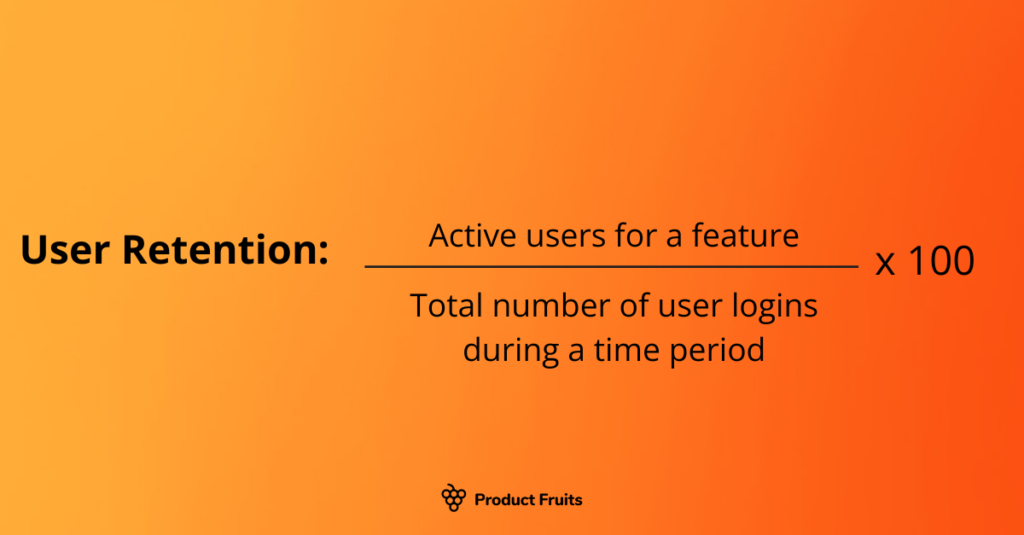
4. Heatmaps & Session Recordings (For Web & Apps)
📌 What It Measures:
- Where users drop off in the product journey.
- Which features users engage with most vs. ignore.
🔹 How to Implement:
- Use tools like Hotjar, FullStory, or Crazy Egg to analyze:
- Click maps → Where do users click most?
- Scroll maps → How far do they scroll before leaving?
- Session recordings → Watch real user sessions to spot confusion.
🔹 Example Insight:
- If users repeatedly hover over a feature but never use it, they might not understand its value.
- If users drop off during checkout, there might be friction in the payment process.
Actionable Takeaway: Improve UI/UX to reduce friction and boost retention.
✅ Why It’s Useful:
Helps optimize the user journey to improve engagement.
Shows real user behavior, not just survey responses.
5. Email & Push Notification Response Rates
📌 What It Measures:
- Whether users open, click, or ignore engagement emails and notifications.
- If inactive users re-engage after a win-back campaign.
🔹 How to Implement:
- Track email open rates and click-through rates (CTR).
- Use A/B testing to see what messages bring users back.
🔹 Example Insight:
- A win-back email with “We Miss You! Here’s 10% Off” gets a low open rate.
- But a value-driven email like “Unlock Advanced Features for Free” sees higher engagement.
Actionable Takeaway: Focus on value-based messaging instead of discounts.
✅ Why It’s Useful:
- Shows how effective engagement strategies are.
- Helps fine-tune communication methods to keep users engaged.
6. Customer Journey Mapping (Retention Funnel Analysis)
📌 What It Measures:
- Identifies drop-off points in the user journey.
- Tracks conversion from onboarding to long-term retention.
🔹 How to Implement:
- Break the journey into stages:
1️⃣ Sign-up → 2️⃣ Onboarding → 3️⃣ First Use → 4️⃣ Continued Use → 5️⃣ Loyalty - Analyze where users drop off the most.
🔹 Example Insight:
- If 50% of users never complete onboarding, retention will suffer.
Actionable Takeaway: Improve guided tutorials or personalized onboarding flows.
✅ Why It’s Useful:
- Helps prioritize fixes in the retention funnel.
- Improves feature adoption and engagement.
How to Improve User Retention: 6 Proven Strategies
User retention is the key to sustainable business growth. Acquiring new users is important, but keeping them engaged and loyal is where true success lies. Below are six powerful strategies to improve user retention, based on best practices and real-world insights.
1. Optimize the Onboarding Experience 🚀
📌 Why It Matters:
First impressions are everything. If users don’t experience the product’s value quickly, they are likely to churn.
🔹 How to Improve It:
- Make onboarding short and engaging – Remove unnecessary steps and focus on core product value.
- Use interactive tutorials, tooltips, and guided walkthroughs – Show users how to use key features.
- Personalize the onboarding experience – Customize based on user type, role, or industry.
- Encourage early activation – Provide incentives (e.g., discounts, free trials, unlockable features) to drive engagement.
🔹 Example:
💡 Duolingo uses gamified onboarding with rewards, streaks, and progress tracking, making learning addictive and increasing retention.
✅ Key Takeaway: The faster users see value, the more likely they are to stay.
2. Personalize User Engagement 🎯
📌 Why It Matters:
Generic user experiences don’t work anymore. Users expect tailored interactions that fit their needs and behaviors.
🔹 How to Improve It:
- Use AI-driven recommendations – Suggest products, content, or features based on past behavior.
- Segment users – Group users by engagement levels, preferences, or demographics.
- Send personalized emails & push notifications – Instead of generic messages, send user-specific updates.
- Use dynamic UI customization – Adapt dashboards, homepage layouts, or product recommendations to match user needs.
🔹 Example:
💡 Netflix customizes the homepage based on viewing history, increasing engagement and reducing churn.
✅ Key Takeaway: Relevant, personalized experiences make users feel valued and encourage long-term retention.
3. Build a Community & Social Engagement 🏆
📌 Why It Matters:
Users stay longer when they feel connected to a community. A sense of belonging increases loyalty.
🔹 How to Improve It:
- Create exclusive user communities – Slack groups, Facebook groups, in-app forums.
- Host webinars, live Q&A, and AMAs – Keep users engaged with interactive content.
- Encourage user-generated content & referrals – Offer incentives for sharing experiences.
- Feature power users or success stories – Spotlight engaged users to inspire others.
🔹 Example:
💡 Figma built an engaged design community, offering forums, challenges, and live events. Users feel connected, boosting retention.
✅ Key Takeaway: A strong community builds loyalty, making users stay for the long haul.
4. Implement Proactive Customer Support & Feedback Loops 💬
📌 Why It Matters:
Many users churn because they struggle with an issue but never ask for help. Providing proactive support reduces frustration and churn.
🔹 How to Improve It:
- Use AI chatbots for instant help – Reduce response time and provide 24/7 support.
- Offer in-app support & FAQs – Users shouldn’t need to leave the product to find help.
- Monitor and respond to negative feedback quickly – Solve pain points before users churn.
- Survey users at key milestones – Ask for feedback during onboarding, after purchases, or before renewal periods.
🔹 Example:
💡 Spotify proactively emails users who haven’t engaged in a while, offering help and personalized playlist recommendations to re-engage them.
✅ Key Takeaway: Proactive support and feedback prevent churn before it happens.
5. Gamify the User Experience 🎮
📌 Why It Matters:
Humans love rewards, progress tracking, and competition. Gamification makes retention fun.
🔹 How to Improve It:
- Use achievement badges & progress bars – Show users how far they’ve come.
- Incentivize continued use – Offer discounts, unlockable content, or bonus features.
- Add leaderboards & challenges – Encourage friendly competition.
- Use streaks & habit-forming techniques – Reward users for consecutive engagement (like Duolingo’s streak feature).
🔹 Example:
💡 Duolingo’s streak system makes language learning addictive, keeping users engaged daily.
✅ Key Takeaway: Gamification creates habit loops, making users return naturally.
6. Continuously Improve the Product Based on Data 📊
📌 Why It Matters:
User retention improves when products evolve based on user behavior, preferences, and feedback.
🔹 How to Improve It:
- Use A/B testing – Test different UI/UX elements and measure engagement.
- Analyze heatmaps & session recordings – Identify friction points and improve usability.
- Monitor feature adoption rates – Identify which features drive engagement vs. which are ignored.
- Prioritize feature requests from engaged users – Keep power users happy by addressing their needs.
🔹 Example:
💡 Airbnb constantly analyzes user data to optimize search results, UI flow, and booking experience, reducing churn.
✅ Key Takeaway: Products that adapt to user needs retain users longer.
